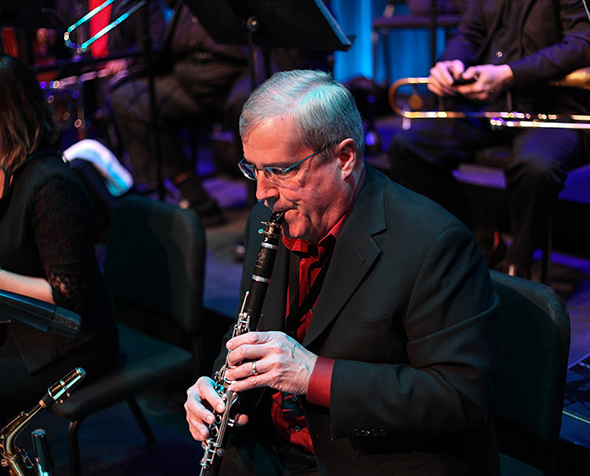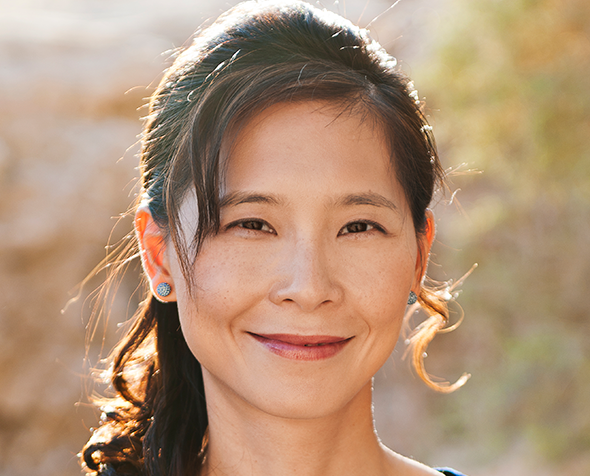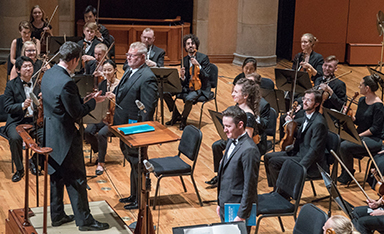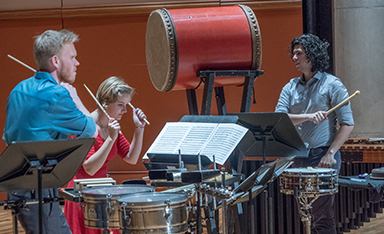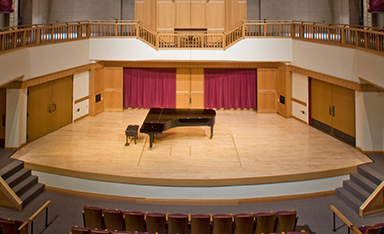Lamont Faculty Profile: T. Carlis Roberts

Talking with T., I lose any sense of time. He is a fascinating intellectual force. His ideas cross boundaries that reveal insight and perspective I never considered, but afterward seem so apparent. In his joint appointment with Lamont and Critical Race and Ethnic Studies (CRES), he brings to the DU community a vibrant, inquisitive curiosity that deepens our understanding of what it is to be human.
T. Carlis Roberts is a native Denverite, making his appointment at DU a type of homecoming. His work in the arts started at age two, when he sang in a choir directed by his mother. From there, either through music, theater, or forays into dance and the visual arts, he remained involved in the arts, double majoring in Music and Theater at Colorado Collage and completing a doctorate in Performance Studies at Northwestern. After graduation, he was appointed to the faculty at UC Berkeley as a specialist in African American music and, more broadly, U.S. American music. He joined DU’s faculty last Fall.
Northwestern defines its program in Performance Studies as “rooted in the analysis and exploration of performance as both artistic practice and scholarly method, and as a means for engaging history, culture, and human expression” – a perfect match for exploring something central to T.’s artistic life: interdisciplinarity. For T., performance studies entails “using performance as a paradigm for how we look at the world. Performance is both an object of study and a method of study. The field explores how scholarship and artistic production can speak to each other – how artistic projects can be enriched by the deep engagement of scholarly research and how historical or theoretical texts can be activated through creative mediums. It is a space where people use performance as a place of intersection.”
When T. talks about his scholarly and creative work as well as his teaching, words like discovery, dialogue, intersections, engage, meeting, shared or created spaces, and conversation emerge. He describes knowledge as something not delivered but, through curiosity and inquiry, created. All capture intersectionality, an interdisciplinary approach to knowledge and understanding that, in the case of T., interweaves his expertise in music and theater and his interests in a wide array of topics. His scholarly interests explore the intersection of music and race and folk culture(s) of the 21st century. It leads T. to ask such questions as what world are we trying to create, who are we as a people, and where do we want to be?
T.’s teaching incorporates scholarship, reading, discussion, and practice. Depending on the course, the amounts will vary, but studying and doing art will always be present. “I want to provide the vocabulary and tools for students to do in-depth analysis and achieve a new level, a new maturity in their critical thinking. With that said, I also want to know what students are feeling and to hear as much as I can about how that relates to what they are thinking. I want to help them understand those links.”
Currently, T. is working on a trio of projects. STONO, an experimental music theater piece he is both writing and composing, looks at the 1739 Stono slave rebellion. “It brings together so many threads of my study and practice,” says T., “including my longstanding study and performance of Afro-folkloric drum and dance styles and their dialogues with one another.” He also is co-writing a book chapter with colleagues Sarah Morelli and Zoe Weiss on paradigms of performer-scholar work. A third project is a commissioned work about the abolitionist John Brown that thinks through the role of white people in black liberation struggles, a collaborative project with a colleague at Elon University.
When I asked T. how it has been these first seven months at DU, he quipped “it’s been good!” He celebrates our scholar-teacher model and the collegiality among colleagues.
Through his joint appointment with Lamont and CRES, he is enjoying a moment of pulling together various facets of his creative and scholarly pursuits that have felt scattered. “My position at DU offers a chance to bring them all together. Previously, I was studying music and race and making art about race and other identities, but it was a bit of a struggle for these conversations to grow and evolve within traditional disciplinary and institutional structures. Ten years ago, I was trying to explain why we were putting these topics together and what that means. We’re now at a point where institutions are understanding that there is something about exploring these intersections that is valuable; not just music and race but all of the interdisciplinary work supported by the CRES program.”
This Spring quarter, T. is teaching a course on music in the Civil Rights era. Students will study different social movements in which music was a tool used, among many ways, cross culturally, promoting a type of conversation. I wish I could take it! I would emerge with a deeper perspective, thanks to T.’s guidance, prodding, and questioning. Using that era as a paradigm, I would discover with greater insight the multiple, complex, and sometimes conflicting strands that intersect in the web of human experience.
